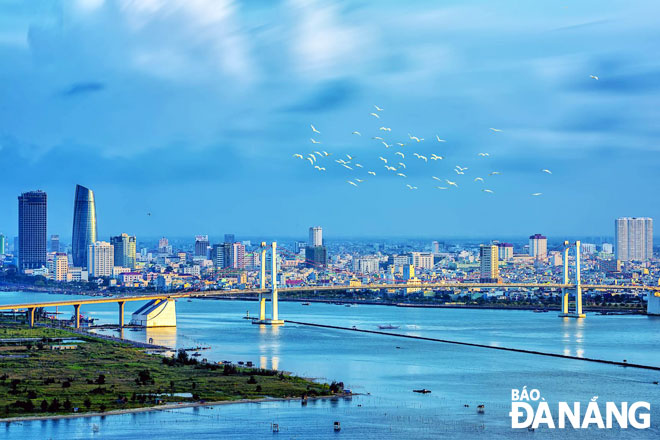Modern urban identity of Da Nang
Da Nang is gradually shaping and clearly embodying the diverse criteria and identity of a modern, multicultural, and multi-ethnic urban area. This is the result of a combination of a region with favourable natural conditions, a meeting point of regional and international transportation routes, a convergence of many ethnic groups, and a place of selective cultural exchange and adaptation. Throughout the process of urban formation and development, cultural diversity here has been energised by a flexible social structure, coupled with an open and tolerant community spirit.
 |
| Illustrative image (Photo: baodanang.vn) |
The community nature and cultural adaptation are perhaps the most prominent features, clearly forming through the development of new urban areas, contributing new cultural imprints to the city alongside its rich traditional culture and inherent dynamism and openness. As a modern and developing city, Da Nang's process of accumulating potential is continuously reinforced by the constant influx of migrants from afar, bringing with them the potential of many cultural regions with thousands of years of development. In the current trend of integration and globalization, the city continues to attract foreign communities to invest, live, study, and work.
The An Thuong area, My An Ward, Ngu Hanh Son District, is currently a convergence point for foreigners living and working, serving as a prime example. The multi-ethnic nature in culture and the friendly relationships among communities are invaluable assets that not every city possesses. These are significant factors that deeply embed the openness and dynamism into the urban core of Da Nang as an inherent strength. Consequently, as a modern urban characteristic of being multicultural, multi-ethnic, and multi-residential, various cultural streams have been absorbed and transformed here, while also facilitating the local people's integration with the world. Da Nang has become a gateway, a place of reception, and a driving force for vibrant cultural exchange and adaptation, ranking among the most dynamic in Viet Nam.
The colorful cultural landscape is a driving force for socio-economic development and a decisive factor in shaping the diverse architectural urban landscape of Da Nang. In the context of cultural adaptation, the architectural achievements of both domestic and international communities have formed an overall trend where the combination is more evident than a homogeneous style. One can see in the urban architecture of Da Nang that the urban spaces and architectural works in Cham, French, and Indochinese styles are the city's heritage.
Regarding the modern urban identity of Da Nang, the Da Nang Department of Construction stated that Da Nang's current appearance and development level result significantly from the application of technological and technical achievements in cultural exchanges, particularly with Western culture. The architectural imprint of Da Nang is reflected in newly invested constructions and the preservation and enhancement of valuable old buildings during the city's development. This process has contributed modern highlights to the city, such as the Da Nang Administrative Centre, APEC Park, the Da Nang City Hall built by the French (now transformed into the Da Nang Museum), Dien Hai Citadel, and tourist resorts on Son Tra Peninsula, and hotels along the coastal road.
A distinctive feature contributing to the unique identity of modern urban Da Nang is the city's persistent effort to build and shape the image of a coastal city with an organic interaction with the sea, an economy linked to the ocean, an urban lifestyle connected with the maritime space, and a marine environment directly impacting the urban operations. Besides the maritime element, it is also linked with natural landscapes of mountains, rivers, and lakes (Hai Van Pass, Son Tra, Marble Mountains, Phuoc Tuong - An Ngai, Ba Na range, Han River, Cu De River, Cam Le River, Do Toa River, Co Co River, natural lakes such as Hoa Trung, Truoc Dong, Dong Treo, Dong Nghe), indigenous and historical architectural works such as Indochinese architecture, traditional folk architecture with long-standing experience in adapting to specific natural conditions. These are the unique characteristics of Da Nang's coastal urban area that need to be preserved, reinforced, promoted, and created during the development process.
The journey of building and renovating Da Nang's urban architectural appearance vividly reflects the integration and exchange between Western culture and local culture. Architectural works are not only eye-catching architectural highlights but also bring many cultural, tourism, and economic values to Da Nang.
Reporting by KHANH HOA - Translating by TRUC VY